Ultimate Guide: How to Grow Mushrooms Australia for Beginners
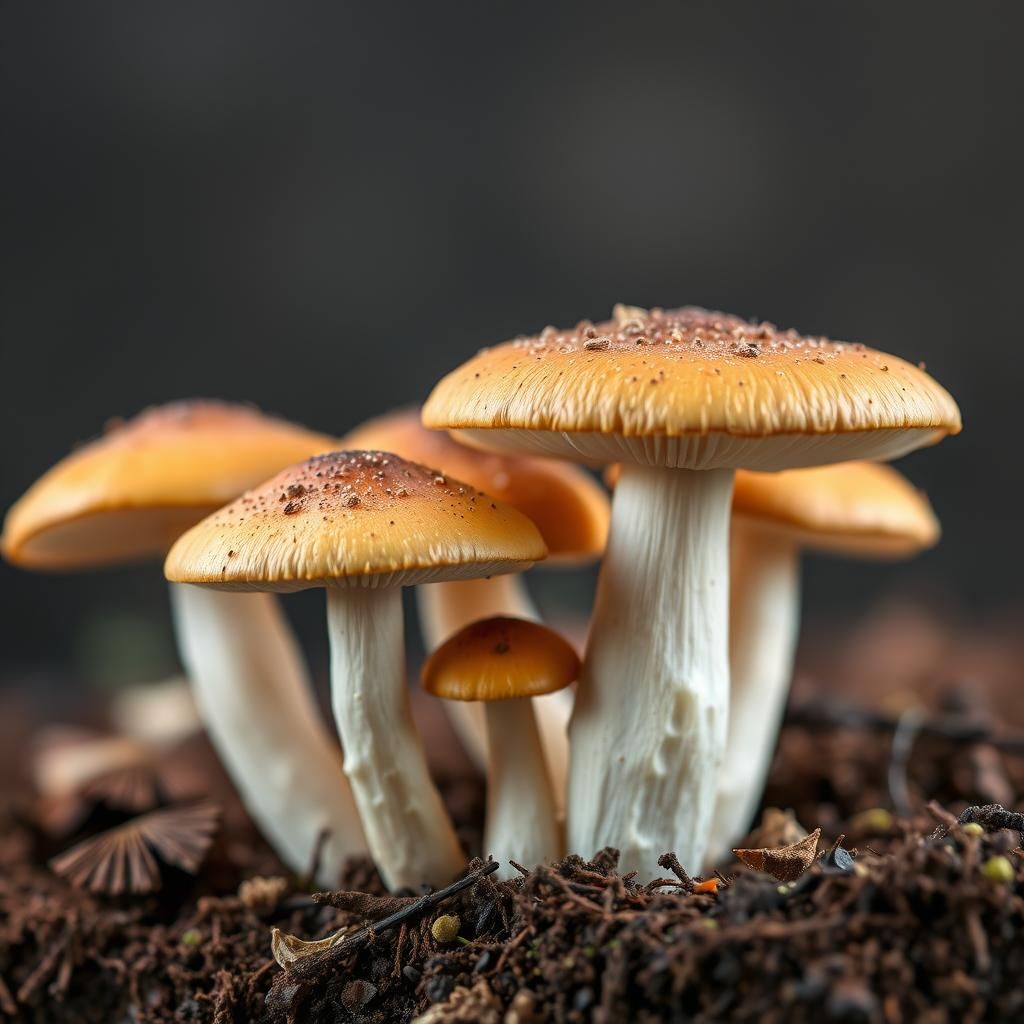
Growing mushrooms can be an exciting and rewarding venture for beginners in Australia. This ultimate guide will walk you through the essential steps to cultivate your own mushrooms at home, from selecting the right species to understanding the growing environment. With the right knowledge and equipment, anyone can successfully produce delicious and nutritious fungi. Whether you're interested in gourmet varieties like shiitake and oyster mushrooms or more traditional types, this guide will equip you with the tools and techniques necessary for thriving mushroom cultivation. Dive in and discover the fascinating world of mycology right in your own backyard!
How to Successfully Grow Mushrooms in Australia
Growing mushrooms in Australia can be a rewarding and enjoyable endeavor, as the country's diverse climate zones allow for the cultivation of various mushroom species. The process typically begins with selecting the appropriate mushroom type, such as oyster, shiitake, or button mushrooms, depending on local conditions and personal preference. It is essential to prepare a suitable that will support growth, which can range from straw and sawdust to coffee grounds. Maintaining humidity and temperature is crucial, as mushrooms thrive in moist, warm environments. Additionally, understanding the benefits of spawn, the mycelium used to propagate mushrooms, will enhance the chances of a successful harvest. Overall, with the right knowledge and resources, anyone in Australia can cultivate mushrooms effectively.
Choosing the Right Mushroom Varieties
Selecting the right mushroom species is critical for successful cultivation in Australia. Popular varieties like oyster mushrooms, which are known for their adaptability, thrive in various climates, while shiitake mushrooms prefer a bit cooler temperatures. Understanding the specific requirements of each type, including suitable growing conditions and potential pests, will ultimately lead to better harvests.
Preparing the Substrate
The substrate provides the necessary nutrients for mushroom growth, and preparing it correctly is key to a successful crop. Common substrates, such as straw, sawdust, and coffee grounds, should be sterilized to eliminate any competing organisms. The substrate must be kept moist but not overly wet, creating an ideal environment for the mycelium to colonize.
Creating the Ideal Environment
Mushrooms require specific environmental conditions to grow effectively. This includes maintaining proper temperature, typically between 20-25°C for most varieties, and ensuring consistent humidity levels of around 80-90%. Utilizing a controlled environment like a mushroom growing tent, or specifically designed space, can help provide the needed conditions for optimal growth.
Using Spawn Effectively
Spawn is the term for the mushroom mycelium used to inoculate the substrate. It plays a crucial role in mushroom cultivation, and choosing high-quality spawn ensures a better yield. When using spawn, it should be mixed thoroughly into the prepared substrate and kept in a dark, warm area to encourage colonization before exposing it to light and fresh air for fruiting.
Harvesting and Maintenance
Once the mushrooms begin to fruit, it is essential to monitor their growth closely. Harvesting should be done at the right time, typically when the caps are still closed or just beginning to open for optimal flavor. Continued maintenance, including keeping humidity levels high and protecting against contaminants, will help ensure a successful cultivation cycle.
| Mushroom Type | Ideal Temperature | Common Substrate |
|---|---|---|
| Oyster | 20-25°C | Sawdust, Straw |
| Shiitake | 15-20°C | Hardwood Logs |
| Button | 18-22°C | Composted Manure |
Is it legal to grow mushrooms in Australia?
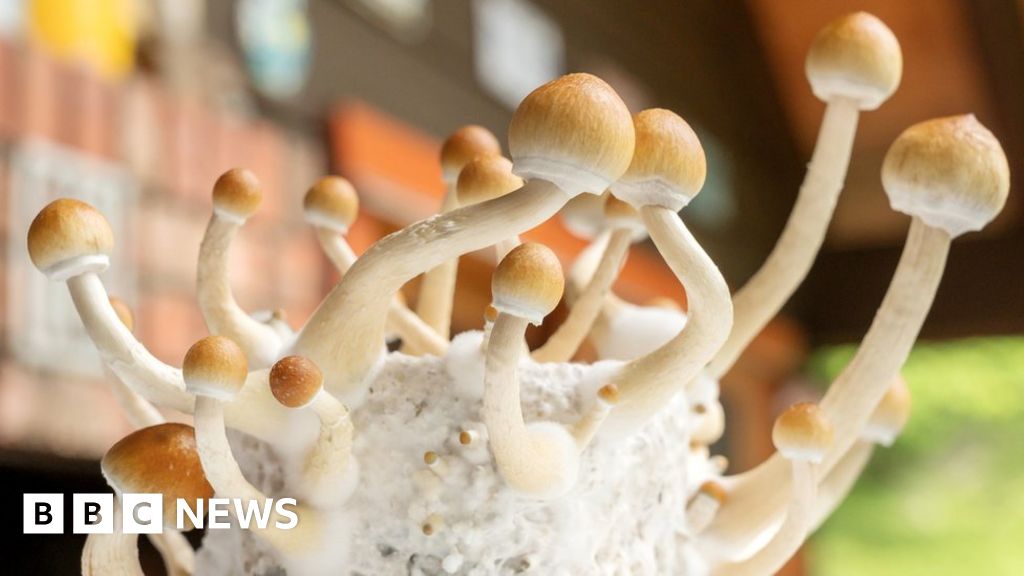
Growing mushrooms in Australia is subject to various legal regulations that can differ significantly by state and territory. Generally, it's legal to cultivate certain types of mushrooms, particularly edible varieties like button mushrooms and shiitake mushrooms, for personal use. However, the legality changes when it comes to psychoactive or illegal mushrooms, which are classified differently under Australian law.
Types of Mushrooms and Their Legal Status
The types of mushrooms you intend to grow will determine the legal implications.
- Edible mushrooms: These are legal to grow in most regions, with common varieties including oyster, portobello, and enoki fungi.
- Psychoactive mushrooms: Varieties such as psilocybin mushrooms are illegal to grow, possess, or use in Australia.
- Medicinal mushrooms: Some fungi have therapeutic uses and can be legally cultivated under specific conditions.
State-Specific Regulations
Each state and territory in Australia has its own legislation regarding mushroom cultivation.
- New South Wales: Generally allows for the cultivation of edible mushrooms but enforces strict regulations on psychoactive varieties.
- Victoria: Similar laws to NSW, with specific guidelines on the types of mushrooms that can be grown.
- Western Australia: Has strong restrictions against psychoactive mushrooms, and enforcement can be stricter.
Licensing and Permits
In some regions, licenses or permits may be necessary for commercial cultivation.
- Business licenses: Those looking to sell mushrooms must apply for relevant permits from local authorities.
- Food safety certifications: For commercial growers, adherence to food safety regulations is essential.
- Research permits: Institutions studying mushrooms may require special clearances for specific varieties.
Health and Safety Concerns
Growing mushrooms poses certain health risks, making compliance with health regulations important.
See also: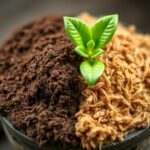
- Contamination issues: Proper techniques for cultivating mushrooms must be followed to avoid contamination.
- Fungal toxicity: Incorrect identification of wild mushrooms can lead to health risks; cultivating them requires knowledge and caution.
- Hygiene practices: Adhering to hygiene standards is crucial to prevent the spread of harmful pathogens in cultivated mushrooms.
Future Trends in Mushroom Cultivation
The mushroom industry in Australia is evolving, with increasing interest in various types of fungi.
- Sustainable practices: There is a growing focus on sustainable mushroom farming techniques.
- Innovative product development: New products such as mushroom-based alternatives to meat are becoming popular.
- Research and education: Increased funding for research into the benefits and uses of different mushroom species is expected.
How to grow mushrooms in Australia?
To grow mushrooms in Australia, you need to consider various factors including the type of mushroom you wish to cultivate, the growing medium, and the environmental conditions that suit mushroom growth. Here’s a detailed guide on how to effectively grow mushrooms in Australia.
Types of Mushrooms to Grow
When starting a mushroom farming venture, it's important to choose the right type of mushroom suited to the Australian climate and market demand. Common choices include:
- Button mushrooms (Agaricus bisporus) – One of the most popular choices, they thrive in cooler temperatures.
- Oyster mushrooms (Pleurotus ostreatus) – Fast-growing and adaptable, they can be cultivated on various substrates.
- Shiitake mushrooms (Lentinula edodes) – Prefer warm temperatures and are typically grown on logs or wood chips.
Choosing the Grow Medium
The medium you choose for your mushroom cultivation is crucial for success. Different mushrooms require different substrates, and in Australia, common substrates include:
- Straw – Widely used for growing oyster mushrooms, it is readily available and effective.
- Wood chips – Ideal for shiitake mushrooms, they provide a natural environment.
- Compost – Often used for button mushrooms, ensures good nutrient availability.
Environmental Conditions
Creating the right environment is vital for mushroom growth. Here are some conditions to consider:
- Temperature – Most mushrooms require specific temperature ranges, generally between 15°C to 25°C.
- Humidity – A humidity level of 80-90% is ideal for most mushrooms; consider misting techniques.
- Light – Mushrooms generally prefer dim light conditions, with indirect sunlight preferred.
Inoculation and Growing Process
Inoculating your substrate with mushroom spawn is a crucial step in the growing process. Here's how to do it:
- Prepare the substrate – Sterilize or pasteurize straw or wood chips to eliminate contaminants.
- Inoculate – Mix the mushroom spawn with the prepared substrate in a clean environment.
- Incubation – Place the inoculated substrate in a dark area with controlled temperature for mycelium colonization.
Harvesting and Storing Mushrooms
Once your mushrooms start to grow, it's important to understand the harvesting process and how to store them properly:
- Harvesting – Mushrooms should be harvested just before the caps fully open to maintain quality and flavor.
- Storage – Store mushrooms in a cool environment. Refrigeration is best with paper bags to absorb moisture.
- Preservation – Consider drying or freezing mushrooms for long-term storage options.
Is mushroom farming profitable in Australia?
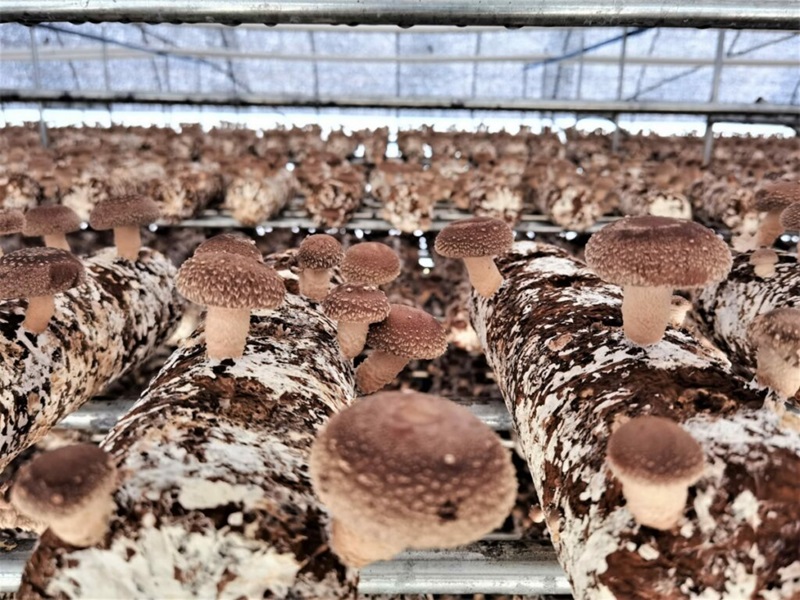
Mushroom farming in Australia can be a profitable venture, provided that farmers navigate the market effectively and manage their operations efficiently. The industry has seen consistent demand for fresh and processed mushrooms, with consumers increasingly valuing their health benefits and culinary versatility. However, several factors can influence profitability, including production costs, market demand, and farming practices.
Market Demand for Mushrooms
The market demand for mushrooms in Australia has been steadily increasing over recent years. Factors contributing to this trend include:
- Health trends: As more people pursue plant-based diets, mushrooms have gained popularity as a meat alternative.
- Culinary innovation: Chefs and home cooks alike are experimenting with different types of mushrooms, boosting their usage in various cuisines.
- Export opportunities: Australia has the potential to export mushrooms to neighboring countries, further increasing the demand.
Cost of Production
The cost of production plays a crucial role in determining the profitability of mushroom farming. Key cost components include:
- Substrate expenses: The materials used for growing mushrooms can vary in price, impacting overall costs.
- Labor costs: Mushroom farming is labor-intensive, requiring skilled workers for harvesting and maintenance.
- Environmental control: Investment in climate control systems can be necessary for consistent production, significantly affecting operational costs.
Type of Mushrooms Grown
The choice of mushroom types can greatly influence profitability. Different species offer varying price points and demand:
See also:
- Button mushrooms: These are the most commonly grown and tend to have lower profit margins.
- Shiitake and oyster mushrooms: These species are often more profitable due to higher market prices and demand.
- Specialty mushrooms: Unique varieties can attract premium prices but may require more expertise to cultivate.
Farming Practices
Effective farming practices are essential for maximizing yields and maintaining profitability. Considerations include:
- Organic farming: Growing mushrooms without chemicals can command higher prices in the market.
- Integrated pest management: Reducing pest-related losses protects yields and minimizes costs.
- Technology usage: Implementing automation and monitoring systems can help optimize growth conditions and reduce labor costs.
Access to Markets
Successfully establishing access to markets is vital for profitability in mushroom farming. Key aspects include:
- Distribution channels: Building relationships with wholesalers, retailers, and restaurants can enhance market reach.
- Direct-to-consumer sales: Farmers' markets and online sales can increase profits by reducing reliance on intermediaries.
- Branding and marketing: Creating a strong brand and effective marketing strategy can differentiate products and increase visibility.
How to grow mushrooms as a beginner?
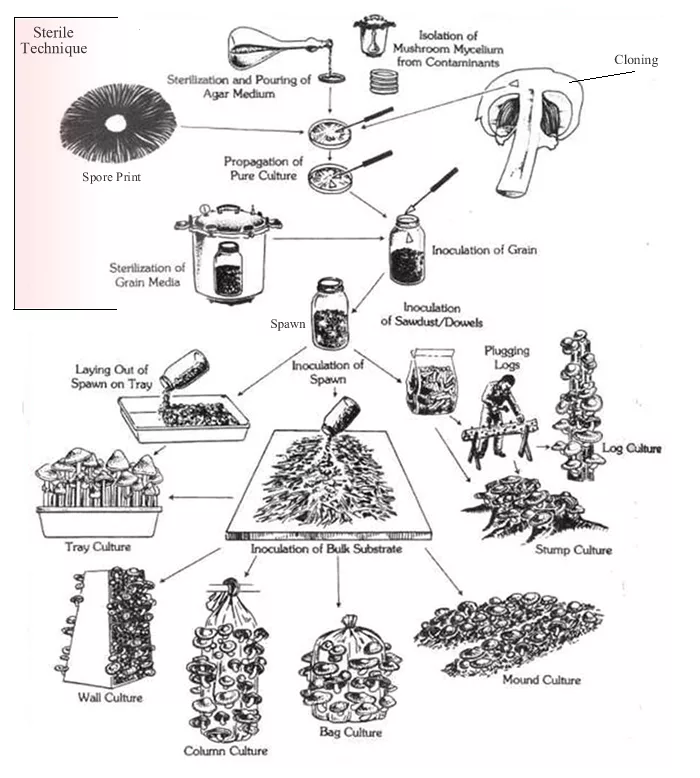
To grow mushrooms as a beginner, you’ll need to follow several essential steps to ensure success. Growing mushrooms can be rewarding and enjoyable, and it involves creating a suitable environment, choosing the right mushroom species, and understanding their growth cycle. Here’s a detailed guide to get you started.
Choosing the Right Mushroom Species
When starting to grow mushrooms, selecting the right species is crucial. Some species are easier for beginners than others. Consider the following options:
- Oyster Mushrooms: Fast-growing and adaptable to various substrates.
- Shiitake Mushrooms: Popular and can be grown on logs or sawdust.
- Button Mushrooms: The most commonly cultivated type and widely available in stores.
Gathering Necessary Supplies
To successfully cultivate mushrooms, you will need some basic supplies. Ensure you have the following items ready:
- Mushroom Spawn: This is the mycelium that will grow into mushrooms.
- Growing Medium: Options include straw, sawdust, or compost, depending on the species.
- Containers: Use plastic bags, jars, or special mushroom cultivation kits for growing.
Preparing the Growing Environment
Creating a suitable environment for your mushrooms is essential for their growth. Keep the following conditions in mind:
- Humidity: Mushrooms need a high-humidity environment, ideally between 80-90%.
- Temperature: Most mushrooms prefer temperatures between 60°F and 75°F (15°C - 24°C).
- Light: While mushrooms don’t need direct sunlight, they do require indirect light for proper growth.
Inoculating the Growing Medium
Inoculation is the process of introducing the mushroom spawn into the growing medium. Follow these steps:
- Sterilize the Medium: Sterilization helps eliminate unwanted pathogens before inoculation.
- Mix Spawn with Medium: Blend the spawn evenly into the prepared substrate.
- Seal Containers: For plastic bags, ensure they are tightly sealed to retain moisture and create a sterile environment.
Monitoring Growth and Harvesting
After inoculation, it's important to monitor the growth of your mushrooms. Consider the following:
- Watch for Mycelium Growth: The white mycelium should start spreading through the substrate within a couple of weeks.
- Maintain Humidity and Temperature: Check regularly to keep conditions within the recommended ranges.
- Harvesting: When mushrooms are fully developed, cut them at the base with a sharp knife.
Questions from Our Readers
What types of mushrooms can be grown in Australia?
In Australia, you can grow a variety of mushrooms such as oyster, shiitake, and portobello. Each type of mushroom has its specific growing conditions, but many can thrive in the temperate climates found across various regions of the country. It's essential to choose mushroom species that suit your local environment and available growing space.
What equipment do I need to start growing mushrooms?
To start growing mushrooms in Australia, you will need some essential equipment such as sterilized substrate, mushroom spores or spawn, and a growing container. Depending on the method you choose, you might also need a humidifier to maintain humidity levels and a thermometer to monitor temperatures for optimal growth conditions.
How can I ensure the best yields when growing mushrooms?
To ensure the best yields when growing mushrooms, it's crucial to maintain the right humidity, temperature, and light conditions for your chosen species. Regular monitoring of these factors and proper sanitation practices can help prevent contamination, leading to healthier mushrooms and better harvests. Following specific guidelines for each species will enhance your chances of a successful crop.
Are there any legal requirements for growing mushrooms in Australia?
In Australia, there are legal requirements to consider when growing mushrooms, especially concerning psychoactive varieties like psilocybin mushrooms, which are illegal in most states. For edible mushrooms, it's essential to follow local regulations regarding cultivation and sales. Always check with your state’s agricultural or regulatory authority to ensure compliance with relevant laws.
See also:

If you want to read more articles like Ultimate Guide: How to Grow Mushrooms Australia for Beginners, we recommend you check out our Compost category.
Leave a Reply
Related Articles